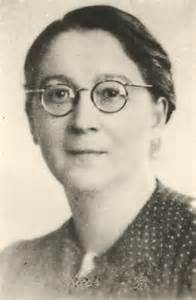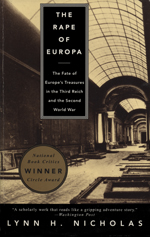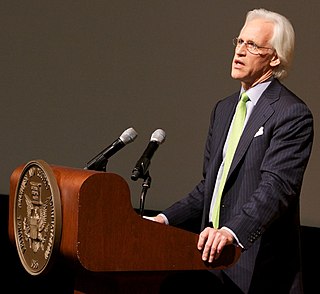Summary
This book focuses on an aspect of World War II that is largely ignored in many history books – the Nazi looting of Europe and Russia and the Allied recovery and repatriation of stolen art. Little known to the general public, Hitler diverted his attention from the prosecution of the war to the systematic theft of Europe's great art. His dream was to build the world's greatest collection – The Führermuseum – in his hometown of Linz, Austria. European museum officials took extraordinary measures to protect art from Hitler and the ensuing war. When U.S. forces prepared to enter Europe, they assembled a special force of largely American and British museum directors, curators, and art historians known as the Monuments, Fine Arts, and Archives program (MFAA) section, attached to the Allied armies.
These "Monuments Men" attempted to minimize damage to European monuments and architecture, and to track down stolen works of art. Their effort would become one of the greatest "treasure hunts" in history. In the end, Allied forces located more than 1,000 repositories in mines and castles across Europe, many of which were filled with art, sculpture, furniture, archives, and other cultural property stolen by the Nazis. Edsel notes that thousands of pieces are still missing, such as Raphael's Portrait of a Young Man from the Czartoryski Museum in Kraków, Poland.
Rescuing Da Vinci tells this story through brief text and more than 460 photographs, 60 of which are in color. This group of photographs has never been published in a single book, and many have not been seen in decades. Images such as Michelangelo's David entombed in brick for protection or a Rembrandt Self Portrait sitting atop crates in a salt mine, capture the story in ways beyond words.

Art theft, sometimes called artnapping, is the stealing of paintings, sculptures, or other forms of visual art from galleries, museums or other public and private locations. Stolen art is often resold or used by criminals as collateral to secure loans. Only a small percentage of stolen art is recovered—an estimated 10%. Many nations operate police squads to investigate art theft and illegal trade in stolen art and antiquities.

Nazi plunder was organized stealing of art and other items which occurred as a result of the organized looting of European countries during the time of the Nazi Party in Germany.

Rose Antonia Maria Valland was a French art historian, member of the French Resistance, captain in the French military, and one of the most decorated women in French history. She secretly recorded details of the Nazi plundering of National French and private Jewish-owned art from France; and, working with the French Resistance, she saved thousands of works of art.

The Monuments, Fine Arts, and Archives Section Unit (MFAA) was a program established by the Allies in 1943 to help protect cultural property in war areas during and after World War II. The group of about 400 service members and civilians worked with military forces to protect historic and cultural monuments from war damage, and as the conflict came to a close, to find and return works of art and other items of cultural importance that had been stolen by the Nazis or hidden for safekeeping. Spurred by the Roberts Commission, MFAA branches were established within the Civil Affairs and Military Government Sections of Allied armies.

The Führermuseum or Fuhrer-Museum, also referred to as the Linz art gallery, was an unrealized art museum within a cultural complex planned by Adolf Hitler for his hometown, the Austrian city of Linz, near his birthplace of Braunau. Its purpose was to display a selection of the art bought, confiscated or stolen by the Nazis from throughout Europe during World War II. The cultural district was to be part of an overall plan to recreate Linz, turning it into a cultural capital of Nazi Germany and one of the greatest art centers of Europe, overshadowing Vienna, for which Hitler had a personal distaste. He wanted to make the city more beautiful than Budapest, so it would be the most beautiful on the Danube River, as well as an industrial powerhouse and a hub of trade; the museum was planned to be one of the greatest in Europe.

The Rape of Europa: The Fate of Europe's Treasures in the Third Reich and the Second World War is a 1994 book by Lynn H. Nicholas and a 2006 documentary film. The book explores the Nazi plunder of looted art treasures from occupied countries and the consequences. It covers a range of associated activities: Nazi appropriation and storage, patriotic concealment and smuggling during World War II, discoveries by the Allies, and the extraordinary tasks of preserving, tracking, and returning by the American Monuments officers and their colleagues. Nicholas was awarded the Légion d'Honneur by France.

The Monuments Men and Women Foundation, formerly known as the Monuments Men Foundation for the Preservation of Art, is an American IRS-approved 501(c)(3) not-for-profit organization, which honors the legacy of those who served in the Monuments, Fine Arts, and Archives program during and after World War II, more commonly known as the Monuments Men and Women. Today, the foundation continues their mission by recovering Nazi looted artworks, documents, and other cultural objects and returning them to their rightful owners. Raising public awareness is essential to the foundation's mission of "Restitution, Education and Preservation".

Robert Morse Edsel is an American businessman and author. He has written three non-fiction books - Rescuing Da Vinci (2006), Monuments Men: Allied Heroes, Nazi Thieves and the Greatest Treasure Hunt in History (2007); and Saving Italy (2013) - chronicling the recovery of artwork stolen by Nazi Germany during World War II. A film based on his book, The Monuments Men, directed by and starring George Clooney, was released in February 2014.
Jonathan Petropoulos is an American historian who writes about National Socialism and, in particular, the fate of art looted during World War II. He is John V. Croul Professor of European History at Claremont McKenna College in Claremont, California. Before his 1999 appointment to Claremont McKenna College, Petropoulos taught at Loyola College in Maryland.
Art theft and looting occurred on a massive scale during World War II. It originated with the policies of the Axis countries, primarily Nazi Germany and Japan, which systematically looted occupied territories. Near the end of the war the Soviet Union, in turn, began looting reclaimed and occupied territories. "The grand scale of looted artwork by the Nazis has resulted in the loss of many pieces being scattered across the world."

Portrait of a Young Man is a painting by Raphael. It is often thought to be a self-portrait. During the Second World War the painting was stolen by the Germans from Poland. Many historians regard it as the most important painting missing since World War II.
Kunstschutz is the German term for the principle of preserving cultural heritage and artworks during armed conflict, especially during the first and second world wars, with the stated aim of protecting the enemy's art and returning after the end of hostilities. It is associated with the image of the "art officer" (Kunstoffizier) or "art expert" (Kunstsachverständiger).

The Reichsleiter Rosenberg Taskforce was a Nazi Party organization dedicated to appropriating cultural property during the Second World War. It was led by the chief ideologue of the Nazi Party, Alfred Rosenberg, from within the NSDAP Office of Foreign Affairs. Between 1940 and 1945, the ERR operated in France, Netherlands, Belgium, Poland, Lithuania, Latvia, Estonia, Greece, Italy, and on the territory of the Soviet Union in the Reichskommissariat Ostland and Reichskommissariat Ukraine. Much of the looted material was recovered by the Allies after the war, and returned to rightful owners, but there remains a substantial part that has been lost or remains with the Allied powers.

The Monuments Men is a 2014 war film directed by George Clooney and written and produced by Clooney and Grant Heslov. The film stars an ensemble cast including Clooney, Matt Damon, Bill Murray, John Goodman, Jean Dujardin, Bob Balaban, Hugh Bonneville and Cate Blanchett.

Dr. Hans Posse was a German art historian, museum curator, and, for over three years, from June 1939 until his death, the special representative of Adolf Hitler appointed to expand the collection of paintings and other art objects which Hitler intended for the so-called "Führermuseum" in Linz, Austria. The museum, which was never built, was to be the core of a cultural center which was part of a planned general rebuilding of the city intended to have it surpass Vienna and rival Budapest.
The German Nazi Party protected art, gold and other objects that had been either plundered or moved for safekeeping at various storage sites during World War II. These sites included salt mines at Altaussee and Merkers and a copper mine at Siegen.
Adolf Hitler's art collection was a large accumulation of paintings which he gained before and during the events of WWII. These paintings were often taken from existing art galleries in Germany and Europe as Nazi forces invaded. Hitler planned to create a large museum in Linz called the Führermuseum to showcase the greatest of the art that he acquired. While this museum was never built, that did not stop Hitler and many other Nazi officials from seizing artwork across Europe. The paintings that the Nazis acquired were often stored in salt mines and castles in Germany during World War II. Eventually, many of these works of art would be rescued by a group called the Monuments Men. While this task force of art dealers and museum specialists were able to retrieve many of the stolen works of art, there are still many paintings that have yet to be found. In 2013, Cornelius Gurlitt, a son of one of Hitler's art dealers, was found with an apartment full of paintings which his father had kept from both the Nazis and the Monuments Men. This discovery of paintings has brought to light once more many paintings that were considered lost.
The Vugesta for “Vermögens-Umzugsgut von der Gestapo" was a Nazi looting organization in Vienna that from 1940 to 1945 seized the possessions of 5,000-6,000 Viennese Jews. It was a key player in the aryanization of Jewish property, redistributing private property stolen from Jewish Austrians to non-Jewish or Aryan Austrians during the Nazi reign in Austria.
Hermann Voss was a German art historian and museum director appointed by Hitler to acquire art, much of it looted by Nazis, for Hitler's planned Führermuseum in Linz, Austria.












